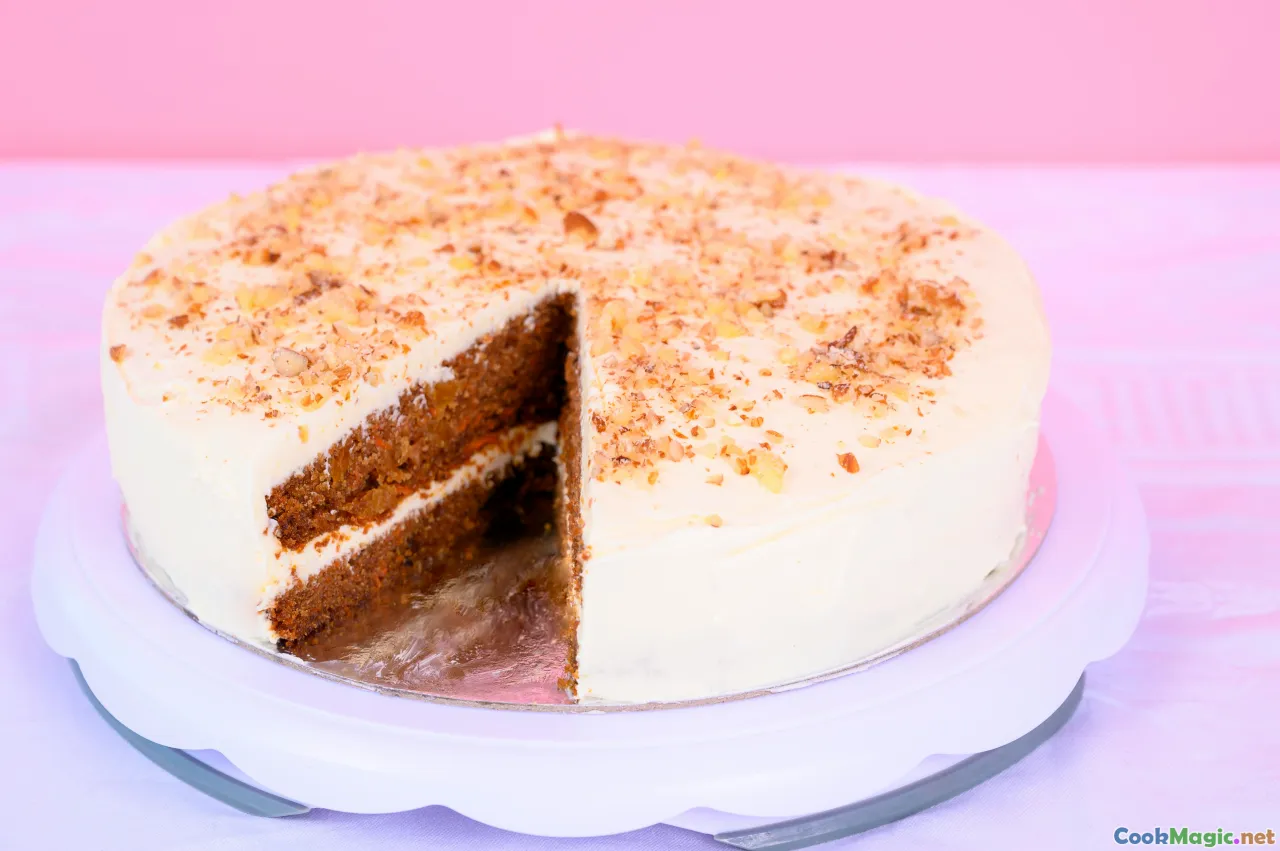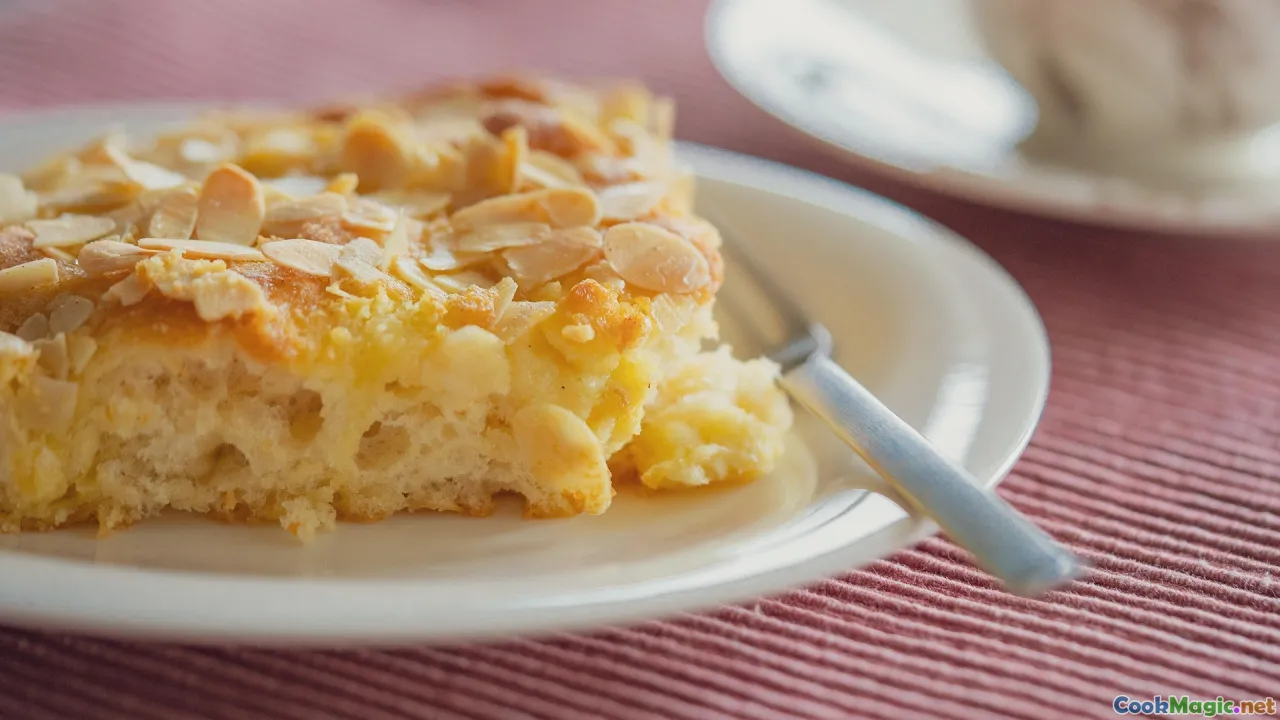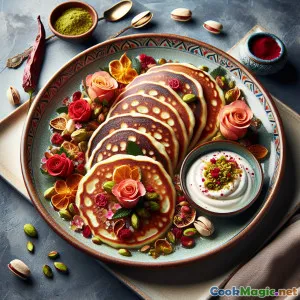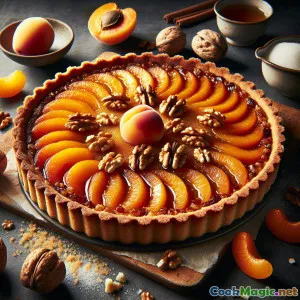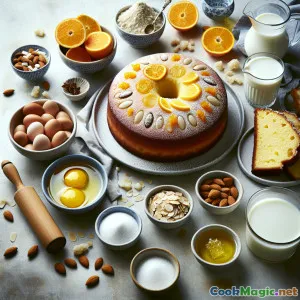
Bolo Sugee: Uma celebração eurásica rica
(Sugee Cake: A Rich Eurasian Celebration)
(0 Avaliações)0
125
outubro 25, 2025
Reportar um problema
Ingredientes
-
200 grams Sêmola fina (suji/rava)
(Use fine grind for a delicate crumb)
-
200 grams Ghee, derretido e resfriado
(Traditional fat; yields rich aroma)
-
150 grams Amêndoas moídas (farinha de amêndoa)
(Blanched, finely ground for tenderness)
-
40 grams Farinha de bolo (ou farinha comum)
(Adds structure without heaviness)
-
1 tsp Fermento em pó
(Fresh, aluminum-free preferred)
-
0.25 tsp sal grosso fino do mar
(Equilibra a doçura)
-
180 grams Açúcar fino
(Superfine for better dissolution)
-
6 large Gemas de ovo
(Room temperature for best volume)
-
3 large Claras de ovo
(Whipped to soft peaks)
-
1 tsp Extrato de baunilha
(Enhances aroma)
-
0.5 tsp Extrato de amêndoa
(Intensifies almond profile)
-
30 ml Brandy
(Traditional Eurasian touch; can substitute orange juice)
-
1 tsp Raspa de laranja ou limão, ralada finamente
(Bright citrus lift)
-
30 ml Leite
(Loosens thick batter if needed)
-
2 tbsp Amêndoas fatiadas
(For decorative crust)
-
1 tbsp Manteiga sem sal, para frigideira
(Greasing the tin)
-
1 sheet Papel manteiga
(Line base of pan)
(Use fine grind for a delicate crumb)
(Traditional fat; yields rich aroma)
(Blanched, finely ground for tenderness)
(Adds structure without heaviness)
(Fresh, aluminum-free preferred)
(Equilibra a doçura)
(Superfine for better dissolution)
(Room temperature for best volume)
(Whipped to soft peaks)
(Enhances aroma)
(Intensifies almond profile)
(Traditional Eurasian touch; can substitute orange juice)
(Bright citrus lift)
(Loosens thick batter if needed)
(For decorative crust)
(Greasing the tin)
(Line base of pan)
Nutrição
- Porções: 12
- Tamanho da Porção: 1 slice (90g)
- Calories: 480 kcal
- Carbohydrates: 0 g
- Protein: 8 g
- Fat: 32 g
- Fiber: 2 g
- Sugar: 24 g
- Sodium: 160 mg
- Cholesterol: 150 mg
- Calcium: 80 mg
- Iron: 1.6 mg
Instruções
-
1 - Preheat and prepare pan:
Preheat oven to 160°C (320°F). Grease a 20 cm round cake tin with butter and line the base with parchment. Bring all eggs to room temperature.
-
2 - Toast semolina in ghee:
In a saucepan over low heat, gently warm ghee and stir in semolina. Toast 5–7 minutes until fragrant and pale golden. Do not brown. Remove from heat to cool slightly.
-
3 - Rest (mature) the semolina:
Let the warm ghee–semolina mixture stand at room temperature for 2 hours. This hydrates the grains for a plush crumb.
-
4 - Ribbon the yolks and sugar:
Beat egg yolks with caster sugar on medium-high until thick, pale, and ribbony, 4–5 minutes. Mix in vanilla, almond extract (if using), zest, and brandy.
-
5 - Combine Dry Ingredients:
Whisk ground almonds, cake flour, baking powder, and salt to break up clumps and distribute leavening evenly.
-
6 - Build the batter:
Stir the rested semolina mixture into the yolk base until cohesive. Fold in the almond–flour mixture. If batter is extremely thick, add milk to loosen slightly.
-
7 - Whip the whites:
In a clean bowl, whisk egg whites to soft peaks—glossy and just holding shape. Avoid over-whipping to dry peaks.
-
8 - Lighten and fold:
Fold one-third of the whites into the batter to lighten, then gently fold in the remainder just until no streaks remain.
-
9 - Fill, decorate, and bake:
Scrape batter into the prepared tin; level top. Sprinkle sliced almonds. Bake 45–55 minutes until deep golden and a skewer emerges with moist crumbs, not wet batter.
-
10 - Cool and finish:
Cool 10–15 minutes in tin, then unmold to a rack. Optional: brush warm top lightly with extra brandy. Cool completely before slicing.
Preheat oven to 160°C (320°F). Grease a 20 cm round cake tin with butter and line the base with parchment. Bring all eggs to room temperature.
In a saucepan over low heat, gently warm ghee and stir in semolina. Toast 5–7 minutes until fragrant and pale golden. Do not brown. Remove from heat to cool slightly.
Let the warm ghee–semolina mixture stand at room temperature for 2 hours. This hydrates the grains for a plush crumb.
Beat egg yolks with caster sugar on medium-high until thick, pale, and ribbony, 4–5 minutes. Mix in vanilla, almond extract (if using), zest, and brandy.
Whisk ground almonds, cake flour, baking powder, and salt to break up clumps and distribute leavening evenly.
Stir the rested semolina mixture into the yolk base until cohesive. Fold in the almond–flour mixture. If batter is extremely thick, add milk to loosen slightly.
In a clean bowl, whisk egg whites to soft peaks—glossy and just holding shape. Avoid over-whipping to dry peaks.
Fold one-third of the whites into the batter to lighten, then gently fold in the remainder just until no streaks remain.
Scrape batter into the prepared tin; level top. Sprinkle sliced almonds. Bake 45–55 minutes until deep golden and a skewer emerges with moist crumbs, not wet batter.
Cool 10–15 minutes in tin, then unmold to a rack. Optional: brush warm top lightly with extra brandy. Cool completely before slicing.
Mais sobre: Bolo Sugee: Uma celebração eurásica rica
Sugee Cake Eurasian Celebration
Sugee cake—a sumptuous semolina and almond confection—sits at the heart of Eurasian festivities in Singapore and Malaysia. Rich with ghee, buoyed by ribbons of egg yolk, and perfumed with vanilla, citrus, and sometimes brandy, this cake is both nostalgic and celebratory. Its hallmark is a plush, fine crumb achieved by an unusual technique: resting semolina in melted ghee so the grains hydrate and soften. The result is a slice that is buttery yet gently grain-kissed, with a golden, regal hue and just enough almond crunch on top.
A Brief History and Cultural Significance
The Eurasian community—descendants of Portuguese, Dutch, British, and Asian lineages—has shaped a unique culinary tapestry. Sugee cake (also spelled suji or sooji) likely evolved from European butter cakes adapted to local pantries. Wheat flour was partially replaced with semolina, ghee took the role of butter in tropical climates, and almonds lent celebratory luxury. Over time, this cake became a fixture at weddings, Christmas gatherings, and milestone birthdays. A splash of brandy is common in family recipes, not for intoxication but for warmth and aroma—an echo of European fruitcakes tailored to the tropics.
What Makes It Special
- Texture contrast: fine, velvety crumb with a delicate, sandy whisper from semolina.
- Richness without heaviness: whipped yolks and gently folded whites keep it buoyant.
- Aromatic complexity: vanilla, almond, and citrus meet the nutty fragrance of ghee.
- Make-ahead friendly: the flavor deepens after a day, making it perfect for celebrations.
Technique Tips for Success
- Mature the semolina: That 2-hour rest in ghee is non-negotiable for tenderness. It plumps the grains so they bake up soft rather than gritty.
- Control the heat while toasting: You’re coaxing fragrance, not color. Over-browning can taste bitter and dry.
- Ribbon the yolks: Beating yolks and sugar until thick and pale incorporates air and ensures a fine crumb. A stand mixer makes this effortless.
- Fold with restraint: Incorporate the egg whites in two additions, stopping the moment streaks disappear. Over-mixing deflates the batter.
- Low-and-slow bake: A moderate 160°C (320°F) heat prevents a dark crust before the center sets.
- Rest before slicing: Like many butter-rich cakes, flavors meld and the crumb stabilizes as it cools—better still the next day.
Substitutions and Variations
- Fat: Ghee is classic for aroma and keeping qualities. Unsalted butter works; clarify it for a closer flavor and texture.
- Almonds: Use almond flour/meal. For a nut-free version, replace with more semolina and a touch of coconut cream for body, knowing the texture will change.
- Spirits: Brandy may be swapped for dark rum, Cointreau, or simply orange juice for a no-alcohol version.
- Citrus: Orange offers a sweet warmth; lemon provides a brighter zing. You can add both.
- Topping: Sliced almonds are traditional; candied citrus peel or a thin glaze of apricot jam and brandy adds a festive sheen.
Make-Ahead, Storage, and Serving
- Make ahead: Bake 1 day in advance to let flavors blossom.
- Storage: Wrap well and keep at cool room temperature 2–3 days. Refrigerate for up to 5 days; bring to room temperature before serving.
- Freezing: Wrap slices tightly and freeze up to 2 months. Thaw in the fridge, then let come to room temperature.
- Serving: Slice into slim wedges—this cake is rich. Pair with unsweetened tea or black coffee, or add a dollop of crème fraîche and fresh berries.
Troubleshooting
- Dry or crumbly: Over-baking or over-toasting semolina. Check doneness at the 45-minute mark; pull when a skewer shows moist crumbs.
- Dense center: Insufficiently whipped yolks or deflated whites. Ensure soft peaks and gentle folding.
- Greasy feel: Ghee too hot when added to semolina, preventing proper hydration. Let it cool to warm before resting.
Personal Note
Sugee cake embodies celebration with restraint: it looks simple, but each slice reveals generations of technique and memory. The fragrance of ghee meeting citrus and almond is unmistakable—the kind of aroma that draws everyone into the kitchen long before the cake is unveiled. Whether you’re honoring Eurasian heritage or discovering it anew, this recipe offers a faithful, deeply satisfying rendition that’s as fitting for holiday tables as for quiet afternoon tea. It’s a cake that rewards patience and care, and in return, it gives you warmth, elegance, and a story worth sharing at every celebration.


